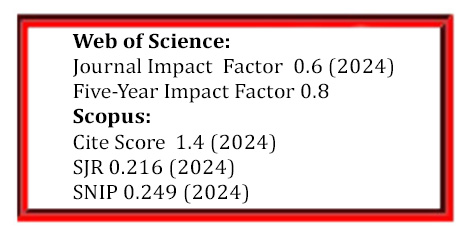1,2,4-Triazole and Its Derivatives as Corrosion Inhibitors for Aluminum Brass (HAl77-2) in 3.5 wt.% NaCl Solution
DOI:
https://doi.org/10.5755/j02.ms.38849Keywords:
1,2,4-triazole, corrosion inhibitor, aluminum brass, electrochemical test, quantum chemistry calculationAbstract
In this work, the 1,2,4-triazole and its derivatives were used as target corrosion inhibitors, the corrosion inhibition of 1,2,4-triazole (TAZ), 3-amino-1,2,4-triazole (ATA) and 3,5-diamino-1,2,4-triazole (DAT) in 3.5 wt.% NaCl solutions for aluminum brass (HAl77-2) are reported. The inhibition properties and mechanism were investigated by weight loss tests, electrochemical tests (electrochemical impedance spectroscopy and linear polarization resistance tests), surface characteristic analysis (scanning electron microscopy (SEM) and energy-dispersive X-ray spectroscopy (EDS) tests), and quantum chemistry calculations. The results showed that TAZ, ATA, and DAT effectively inhibited the corrosion of HAl77-2. The maximum inhibition efficiencies of the three corrosion inhibitors were 84.4 %, 86.4 %, and 87.1 %, respectively. The adsorption processes followed the Langmuir adsorption isotherm model and were of mixed type, i.e., both physisorption and chemisorption. SEM and EDS tests confirmed the effective adsorption of the TAZ, ATA, and DAT on the HAl77-2 surface. The results of quantum chemistry calculations were consistent with the electrochemical test results.
Downloads
Published
Issue
Section
License
The copyrights for articles in this journal are retained by the author(s), with first publication rights granted to the journal. By virtue of their appearance in this open-access journal, articles are free to use with proper attribution in educational and other non-commercial settings.



